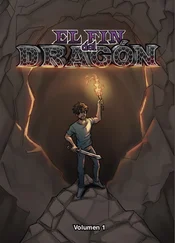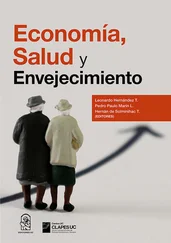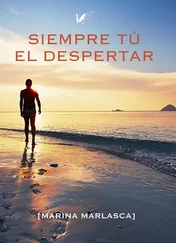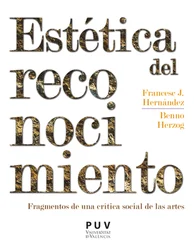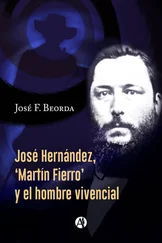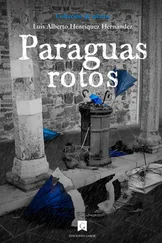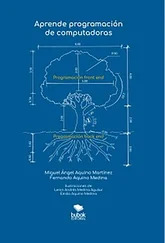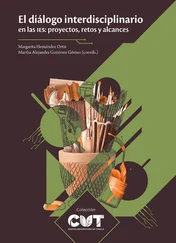I wanted to ask him to show me how to look, but I didn’t have the courage. Perhaps it wasn’t that I needed to write the sentences with which I could reconstruct the thinking and morality of Vicente Rojo, but that I needed something new to focus on, to rid these words of their superficial meanings in order to understand their truth. I could view that man as a fraud who had tried to pass himself off as an important artist, seeking who knows what benefit, or I could see him as an individual who had been brave enough to take his search for meaning to such an extreme that when I met him, he believed he was someone else. I could see myself as an obese woman who had been abandoned by her husband, who is overwhelmed by her daughter’s sadness, and who hides away because everything frightens her, or I could see myself as a woman smart enough to make the most of her desire to discover new narratives that make the world bigger, and who works towards finding her own little corner where she can feel comfortable and where things aren’t so terrible. Once you stumble across your desired image, you have to defend your narrative at all costs. I had to be strong enough to fend off any negative thoughts that contradicted the image I wanted to see. From this moment on, every piece of the puzzle would fit and my landscape would be filled with geometric figures that come together to form a beautiful melody that explains everything with joy. There would be no words or shadows to fear.
By the time I left his studio, the man who thought he was Vicente Rojo had given me his solemn promise that he would help my daughter’s friends paint the portrait of Mario. I never spoke to him again, and Berta never told me if he held true to his word. The teachers never gave the students permission to paint the mural in the gymnasium, but they were allowed to paint one of the walls in the classroom.
I’ve seen Berta many times standing in front of the painting given to me by the man who thought he was Vicente Rojo. The frame is still broken; we never repaired it. I think that huge, imperfect canvas, which is such a poor copy of the Mexican artist’s work, and the painting he gave my daughter, are the only two artworks made by the man I interviewed so terribly, so many times. Perhaps they have no merit besides the fact that they are material proof of a leap into the void: he dared to create something, he dared to show that, despite the perfect story he had built around his identity, his work was not the work of Vicente Rojo. This show of bravery alone made me think he was admirable. Berta was right when she said that keeping that painting in our home was as strange as adopting an ibis.
I kept reading and taking notes about Vicente Rojo while Isabel kept asking for my article about the classes given by a famous Mexican artist in a neighbourhood high school. They had already settled on a publication date.
In one of the texts collected in Open Diary , Vicente Rojo introduces the writer Max Aub as if he were a character invented by the Catalan painter Jusep Torres Campalans. When I read it, I was impressed by the profound complicity that existed between those two artists. It wasn’t just a game of masks and winks, it was a pact between two intellectuals who agreed to dive into a deeper dimension — or a higher dimension, if you prefer — than reality. What we perceive through our senses is not enough; truth is forged in our minds, through intelligence, knowledge, and imagination: so goes the thinking of Vicente Rojo and Max Aub. It’s the same thing as when Fernando Pessoa said he had no need to leave his squalid bedroom to travel the world.
I had read in an academic article that Max Aub played a similar game to Pessoa when he published a review of a play that was never performed. The theatre, script, actors, and director never existed either. Without knowing of Aub’s precedent, Juan Antonio Masoliver, so Mexican in some ways and such an exile in others, had also published a review of a book that had never been written, by an author and publisher whose absurd names he had invented for the occasion. Another example that springs to mind is a dialogue between two characters, named Vicente and Rojo, with which Marco Perilli opens one of those delightful books about the artist’s oeuvre that was lent to me by the man who was convinced he was Vicente Rojo. Perhaps because all of this was swirling around in my mind, I started behaving like I was in my dream, in an elegant room in Coyoacán, at a literary salon full of intellectuals where I had decided I would write an article about Vicente Rojo that would be published by the newspaper in the capital city of the region where I lived. They had already settled on a publication date.
Sure enough, I sent my article to Isabel. Just as she had suggested, I wrote about the experience of twenty or so students from a neighbourhood high school who, unbeknown to them, had attended a painting class given by a very prestigious artist. I described how the initial discomfort of the painter at having to perform publicly slowly became a kind of cryptic complicity with the teenagers, who never stopped asking him about when he painted, how he decided on forms, if he preferred Catalan or Mexican food, if it was really as dangerous to live in Mexico as they said on the news, about why he didn’t have a Mexican accent when he spoke, about why he liked Mexico better than Spain, if he had been friends with Frida Kahlo, and if he would help them paint a mural with a portrait of one of their classmates, who was very sick.
I think that in the article I managed to capture the artist’s character, the calm he radiated with his voice, and the balance he imposed with each movement of his hands, no matter how small. I created a Vicente Rojo who possessed an important secret, who seemed like some kind of shaman or oracle. Obviously, I made it abundantly clear that his story was an example of hard work. The teenagers who attended this legendary class had to understand the importance of work and the desire to overcome. Thanks to his dedication, a young man from a family deeply affected by war had been able to become one of the most important artists and intellectuals of his time.
I’m not sure I emphasised enough the importance of his contributions to Mexican culture, because I didn’t want to harp on how under-educated the teachers at the school must have been, seeing as they had no idea who Vicente Rojo was. Of course, I included the poignant scene of the sisters’ piano hanging out the window of an apartment building in Barcelona. Few people can create such a perfect anecdote for explaining how the only world a person has known can collapse in a single moment. It becomes a much crueller image because the collapse is witnessed by a seven-year-old boy. To round out the article, I described the image of the artist amongst the students, standing in front of a wall where they were painting the portrait of a sick classmate.
When I finished writing the article, I asked Berta to read it. In doing that, I realised how important whatever she might have to say would be to me, and then I realised that the simple fact that she would read it had made the whole enterprise worthwhile. Before, the moment when I turned in an article was the moment when all my fears and anxieties appeared. I worried I had got a fact wrong or misinterpreted something, that I had misunderstood an answer from someone I had interviewed, that I’d made a spelling mistake or included something that might offend someone… In short, I always felt like I’d committed an act of arrogance that would be rightly punished through a sense of generalised disdain. This is why when the article was finally published, I hoped that it would slip by unnoticed and be quickly forgotten.
Berta read my article about Vicente Rojo’s classes at her school. She smiled and said she liked it very much. Although she didn’t understand a word of it, she thought it was beautiful. She wanted a copy she could keep. She offered no other comment, and for me it was enough that she said she found it beautiful.
Читать дальше

